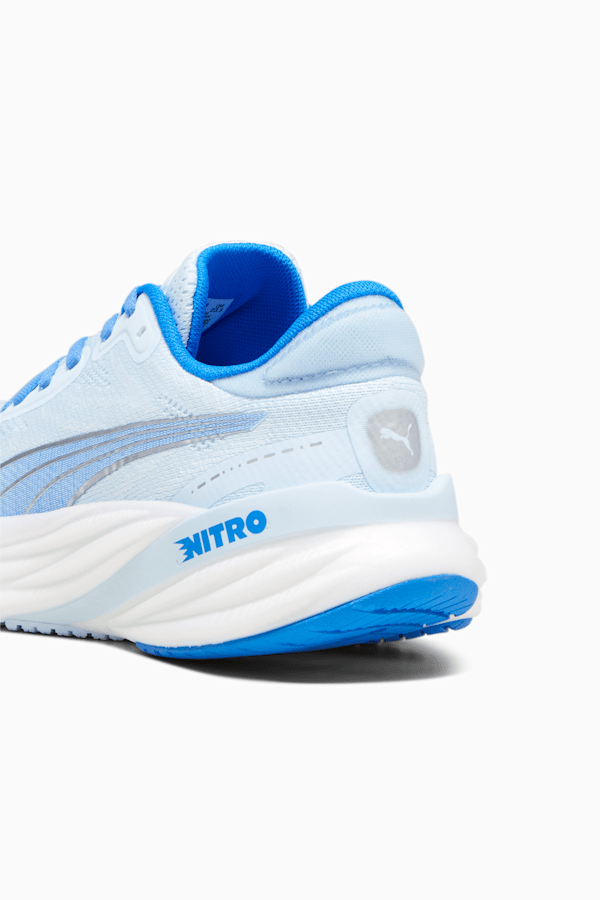Ice therapy, also known as cryotherapy, is an effective method for managing pain and promoting recovery from injuries. By applying cold to affected areas, ice therapy can reduce inflammation, numb pain, and accelerate the healing process. This article explores the science behind ice therapy, the benefits of using ice machines, how to choose the right device, and practical tips for incorporating ice therapy into your rehabilitation plan.
Understanding these aspects can help you make informed decisions about your recovery strategies, ensuring you maximize the benefits of ice therapy for optimal healing. Whether you are an athlete, recovering from surgery, or dealing with chronic pain, this guide provides essential insights to enhance your recovery journey.
In this article you will find:
Understanding the Science Behind Ice Therapy
Ice therapy, often referred to as cryotherapy, is a widely recognized method for alleviating pain and promoting recovery following injuries. The underlying science of ice therapy is rooted in the physiological responses of the body to cold exposure. When applied correctly, ice can significantly aid in the healing process by reducing inflammation, numbing pain, and speeding up recovery times.
The Physiological Effects of Cold
When ice is applied to an injured area, several physiological changes occur:
- Vasoconstriction: The application of cold leads to vasoconstriction, where blood vessels narrow. This reduces blood flow to the affected area, which helps minimize swelling and inflammation.
- Reduced Metabolism: Cold therapy slows down cellular metabolism, which decreases the demand for oxygen in the injured tissues. This can help mitigate tissue damage.
- Pain Relief: Ice numbs the area, providing immediate pain relief by interrupting the pain signal transmission to the brain.
- Decreased Muscle Spasms: Cold therapy can help reduce muscle spasms, allowing for better mobility and comfort during recovery.
Scientific Research Supporting Ice Therapy
Numerous studies have highlighted the effectiveness of ice therapy in injury recovery. Research published in the Journal of Athletic Training indicates that ice application can significantly reduce swelling and pain in acute injuries. The study suggests that the combination of rest, ice, compression, and elevation (the RICE method) remains one of the most effective strategies for initial injury management.
Best Practices for Ice Therapy
To maximize the benefits of ice therapy, it is essential to follow best practices:
- Timing: Apply ice for 15-20 minutes every hour as needed during the first 48 hours post-injury.
- Protection: Always use a barrier, such as a cloth or towel, between the ice and skin to prevent frostbite.
- Monitor Response: Pay attention to how your body responds to ice therapy. If you experience increased pain or discomfort, discontinue use and consult a healthcare professional.
Incorporating ice therapy into your recovery routine can significantly enhance your healing process. Understanding the science behind this therapeutic approach allows individuals to make informed decisions about their recovery strategies. As we delve deeper into the benefits of using ice machines in the next section, we will explore how these devices can streamline the application of ice therapy, making it more effective and convenient for users.
Benefits of Using Ice Machines for Injury Recovery
Ice machines have become an essential tool in the realm of injury recovery, offering numerous benefits that enhance traditional ice therapy methods. These devices provide a consistent and controlled application of cold therapy, making them a preferred choice for athletes, physical therapists, and individuals recovering from injuries. Below, we explore the key advantages of using ice machines in the recovery process.
Enhanced Cold Distribution
One of the primary benefits of ice machines is their ability to deliver uniform cold coverage to the affected area. Unlike manual ice packs, which may not conform perfectly to the body, ice machines are designed to wrap around the injury, ensuring that the cold penetrates deeply and evenly. This enhanced distribution can lead to:
- Improved Efficacy: More effective reduction of swelling and inflammation due to consistent temperature application.
- Targeted Treatment: Ability to focus on specific areas, providing relief where it’s needed most.
Convenience and Ease of Use
Ice machines are user-friendly, making them accessible for anyone recovering from an injury. Many models come with adjustable settings, allowing users to customize the duration and intensity of the cold therapy. This convenience translates to:
- Hands-Free Operation: Users can engage in other activities while receiving treatment, which is particularly beneficial for those with busy schedules.
- Reduced Preparation Time: Unlike traditional ice packs that require preparation and cleanup, ice machines are ready to use with minimal setup.
Consistent Temperature Control
Maintaining the right temperature is crucial for effective ice therapy. Ice machines are equipped with features that ensure consistent cooling throughout the treatment session. This reliability offers several advantages:
- Optimal Treatment Duration: Many ice machines allow for extended use without the risk of frostbite, as they maintain a safe temperature.
- Increased Comfort: Users experience less discomfort compared to traditional ice packs, which can become too cold or unevenly chilled over time.
Scientific Validation and Recommendations
Research supports the effectiveness of ice machines in injury recovery. A study published in the Journal of Athletic Training indicates that consistent and controlled cold therapy significantly reduces recovery time and enhances overall outcomes for injured athletes. Physical therapists frequently recommend ice machines for their ability to deliver reliable and effective treatment.
Conclusion: A Step Towards Faster Recovery
Incorporating ice machines into your injury recovery regimen can greatly enhance the effectiveness of cold therapy. Their ability to provide consistent, targeted, and convenient treatment makes them an invaluable asset for anyone looking to expedite their recovery process. As we move forward, we will discuss how to choose the right ice machine tailored to your specific needs, ensuring you get the most out of your recovery journey.
Choosing the Right Ice Machine for Your Needs
With a variety of ice machines available on the market, selecting the right one for your specific needs can be a daunting task. Different models cater to various requirements, whether you are an athlete recovering from a sports injury, someone rehabilitating from surgery, or simply seeking relief from chronic pain. Understanding the features and functions of ice machines is crucial to making an informed decision.
Key Features to Consider
When evaluating ice machines, consider the following key features that can enhance your recovery experience:
- Size and Portability: Depending on your living situation and how often you plan to use the machine, size and portability can be important. Compact models are easier to store and transport, while larger machines may offer more extensive coverage.
- Cooling Mechanism: Some machines utilize ice water circulation, while others may incorporate advanced cooling technologies. Machines with continuous cooling systems tend to provide more effective and consistent therapy.
- Temperature Control: Look for machines that allow you to adjust the temperature settings. This feature enables you to customize your treatment based on your comfort level and the severity of your injury.
- Timer Function: A built-in timer can help you manage your treatment sessions more effectively, ensuring you don’t exceed recommended usage times.
- Ease of Use: User-friendly designs with clear instructions and intuitive controls can make a significant difference in your experience. Consider models that are easy to set up and operate.
Assessing Your Specific Needs
Your unique situation will dictate which features are most important. Here are some considerations to help you assess your specific needs:
- Type of Injury: If you are recovering from a sports-related injury, a machine that allows for targeted treatment on specific body parts may be beneficial. For post-surgical recovery, a machine that provides broader coverage might be more appropriate.
- Frequency of Use: If you plan to use the ice machine frequently, investing in a durable and reliable model is essential. Frequent users may benefit from machines with higher capacity and longer cooling times.
- Budget: Ice machines range widely in price. Determine your budget beforehand and look for models that offer the best value for the features you need. Remember, a higher price does not always guarantee better quality.
Popular Brands and Models
Several reputable brands have established themselves in the ice machine market. Here are a few that are highly regarded:
- Game Ready: Known for its innovative combination of cold and compression therapy, Game Ready machines are widely used by professional athletes and rehabilitation centers.
- Polar Products: Offering a range of ice therapy systems, Polar Products is recognized for its versatility and effectiveness in managing pain and swelling.
- Aircast: Specializing in orthopedic solutions, Aircast provides ice machines designed for both home and clinical use, making them a popular choice among healthcare professionals.
For more information on specific models and their features, consider visiting Healthline, which provides comprehensive reviews and comparisons of various ice therapy machines.
Conclusion: Making an Informed Decision
Choosing the right ice machine is a critical step in your recovery journey. By considering the key features, assessing your specific needs, and exploring reputable brands, you can find a machine that best suits your requirements. In the next section, we will discuss how to effectively incorporate ice therapy into your rehabilitation plan for optimal results.
Incorporating Ice Therapy into Your Rehabilitation Plan
Integrating ice therapy into your rehabilitation plan can significantly enhance your recovery from injuries, surgeries, or chronic pain. This method not only helps manage pain and inflammation but also supports overall healing. Understanding how to effectively incorporate ice therapy into your routine can maximize its benefits and ensure a smooth recovery process.
Establishing a Treatment Schedule
Creating a structured treatment schedule is essential for effective ice therapy. Here are some guidelines to help you establish a routine:
- Frequency: For acute injuries, apply ice therapy every 1-2 hours during the first 48 hours. For chronic conditions, consider using it after physical activity or as needed for pain relief.
- Duration: Each session should last between 15-20 minutes. This timeframe is sufficient to achieve the desired effects without risking skin damage.
- Timing: Incorporate ice therapy immediately after activities that aggravate your injury or pain. This can help mitigate inflammation and provide relief more effectively.
Combining Ice Therapy with Other Treatments
Ice therapy can be more effective when combined with other rehabilitation methods. Here are some strategies to enhance your recovery:
- Rest and Elevation: Pair ice therapy with rest and elevation of the injured area to further reduce swelling and promote healing.
- Compression: Use compression wraps in conjunction with ice therapy. This combination can help control swelling and provide additional support to the injured area.
- Physical Therapy: Discuss with your physical therapist how to integrate ice therapy into your sessions. They can provide personalized recommendations based on your specific needs and recovery goals.
Monitoring Your Progress
Keeping track of your recovery progress is vital when incorporating ice therapy into your rehabilitation plan. Consider the following:
- Symptom Diary: Maintain a diary to record your pain levels, swelling, and any changes in your condition after using ice therapy. This information can be helpful for your healthcare provider in assessing your recovery.
- Adjusting Treatment: Be open to adjusting your ice therapy routine based on your progress. If you notice significant improvement, you may reduce the frequency or duration of your sessions.
Consulting Healthcare Professionals
Before starting any new treatment regimen, it’s essential to consult with healthcare professionals, particularly if you have underlying health conditions or severe injuries. They can provide tailored advice on how to best incorporate ice therapy into your rehabilitation plan. Resources like the Physiopedia offer valuable insights into the use of ice therapy in rehabilitation.
Conclusion: A Holistic Approach to Recovery
Incorporating ice therapy into your rehabilitation plan can significantly contribute to a faster and more effective recovery. By establishing a consistent treatment schedule, combining therapies, monitoring your progress, and consulting professionals, you can maximize the benefits of ice therapy. As you continue on your recovery journey, remember that a holistic approach, which includes various treatments and self-care strategies, will yield the best results. Ice therapy, or cryotherapy, is an effective method for alleviating pain and promoting recovery from injuries by inducing physiological responses such as vasoconstriction, reduced metabolism, and pain relief. Utilizing ice machines enhances this therapy by providing consistent cold distribution, convenience, and controlled temperature, making them a preferred choice for both athletes and individuals in rehabilitation.
To incorporate ice therapy into your rehabilitation plan effectively, establish a structured treatment schedule, combining it with other methods like rest, elevation, and compression. Monitor your progress through a symptom diary and consult healthcare professionals for tailored advice. By following these practices, you can maximize the benefits of ice therapy and support a smoother recovery process.




